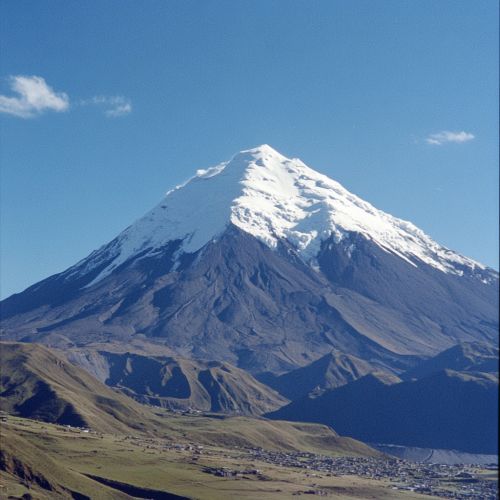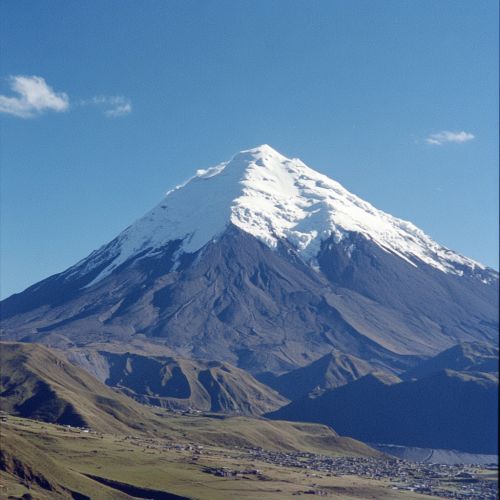Chimborazo
Introduction


Chimborazo is a stratovolcano located in the Andes mountain range of Ecuador. It is the highest mountain in Ecuador and the furthest point on the Earth's surface from the Earth's center due to the equatorial bulge. This article delves into the geological, geographical, historical, and ecological aspects of Chimborazo, providing a comprehensive and detailed exploration of this iconic mountain.
Geographical Context
Chimborazo is situated in the central part of Ecuador, approximately 150 kilometers (93 miles) southwest of the capital city, Quito. The volcano is part of the Cordillera Occidental, a subrange of the Andes. Chimborazo's summit reaches an elevation of 6,263 meters (20,548 feet) above sea level, making it the highest peak in Ecuador. Due to the Earth's equatorial bulge, Chimborazo's summit is the furthest point from the Earth's center, surpassing even Mount Everest in this regard.
Geological Composition
Chimborazo is classified as a stratovolcano, characterized by its layered structure composed of hardened lava, tephra, pumice, and volcanic ash. The volcano's geological history is marked by several major eruptive phases, with the most recent significant activity occurring approximately 1,500 years ago. Chimborazo's volcanic structure is primarily andesitic, with dacitic and rhyolitic components. The presence of glaciers on its summit and flanks indicates ongoing glacial and volcanic interactions.
Climatic Conditions
The climate of Chimborazo varies significantly with altitude. The lower slopes experience a temperate climate, while the upper regions are characterized by alpine and glacial climates. The temperature at the summit can drop to as low as -20°C (-4°F). Precipitation is relatively high, with the majority falling as snow at higher elevations. The glaciers on Chimborazo are essential sources of water for the surrounding communities and ecosystems.
Flora and Fauna
Chimborazo's diverse altitudinal zones support a wide range of flora and fauna. The lower slopes are covered with Andean forests, home to species such as the Andean condor, spectacled bear, and various hummingbirds. As the altitude increases, the vegetation transitions to páramo, a high-altitude grassland ecosystem. The summit region is largely devoid of vegetation due to the harsh climatic conditions. The unique biodiversity of Chimborazo is a subject of ongoing scientific research and conservation efforts.
Historical Significance
Chimborazo has held cultural and historical significance for indigenous peoples in the region for centuries. The mountain was considered sacred by the Inca civilization and other pre-Columbian cultures. In the 19th century, Chimborazo gained international attention when the German explorer Alexander von Humboldt attempted to climb it in 1802. Although he did not reach the summit, his expedition contributed significantly to the scientific understanding of high-altitude environments.
Climbing and Exploration
Chimborazo is a popular destination for mountaineers and adventurers. The first successful ascent to the summit was achieved by Edward Whymper and his party in 1880. Today, several established routes lead to the summit, with the most popular being the Whymper and Veintimilla routes. Climbing Chimborazo requires technical skills and acclimatization to high altitudes. The presence of glaciers and crevasses adds to the challenges faced by climbers.
Environmental Concerns
Chimborazo's glaciers have been retreating at an alarming rate due to climate change. This glacial retreat poses a threat to the water supply for local communities and ecosystems. Efforts are being made to monitor and mitigate the impacts of climate change on Chimborazo's glaciers. Additionally, the increasing popularity of mountaineering has raised concerns about environmental degradation and the need for sustainable tourism practices.
See Also
References
- [Include references here if available]
